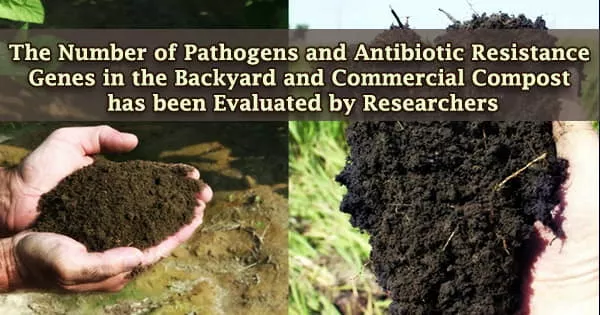Genetically Modified Organisms (GOMs) are being created and grown across the globe. Genetic modification occurs when the DNA of one living thing is added into the DNA of another so that a ‘desirable’ trait becomes part of the new, modified, organism. These modifications can alter or introduce particular traits in the organism. For example, a corn plant can be bred to resist herbicides that will kill the weeds growing around it that would compete for nutrients and light.
The exact definition of a genetically modified organism and what constitutes genetic engineering varies, with the most common being an organism altered in a way that “does not occur naturally by mating and/or natural recombination”. A wide variety of organisms have been genetically modified (GM), from animals to plants and microorganisms. Genes have been transferred within the same species, across species (creating transgenic organisms) and even across kingdoms. New genes can be introduced, or endogenous genes can be enhanced, altered, or knocked out.
The World Health Organization defines GMOs as, “Organisms (i.e. plants, animals or microorganisms) in which the genetic material (DNA) has been altered in a way that does not occur naturally by mating and/or natural recombination”. GMO foods come from plants and animals who are genetically modified. The Food and Agricultural Organization of the United Nations and the European Commission define GMO foods as “a product ‘not occur naturally by mating and/or natural recombination”.
Different examples of genetically modified foods include corn, tomatoes, potatoes, apples, and soybeans. All of them are processed in the United States. Other different foods that are not currently being processed in the United States are beets and plums. For the most part, these foods are good for you. They are a part of our everyday life when you look at the different examples of them.
In conventional livestock production, crop farming, and even pet breeding, it has long been the practice to breed select individuals of a species in order to produce offspring that have desirable traits. In genetic modification, however, recombinant genetic technologies are employed to produce organisms whose genomes have been precisely altered at the molecular level, usually by the inclusion of genes from unrelated species of organisms that code for traits that would not be obtained easily through conventional selective breeding.
Genetically modified organisms (GMOs) are produced using scientific methods that include recombinant DNA technology and reproductive cloning. In reproductive cloning, a nucleus is extracted from a cell of the individual to be cloned and is inserted into the enucleated cytoplasm of a host egg (an enucleated egg is an egg cell that has had its own nucleus removed). The process results in the generation of an offspring that is genetically identical to the donor individual. The first animal produced by means of this cloning technique with a nucleus from an adult donor cell (as opposed to a donor embryo) was a sheep named Dolly, born in 1996. Since then a number of other animals, including pigs, horses, and dogs, have been generated by reproductive cloning technology. Recombinant DNA technology, on the other hand, involves the insertion of one or more individual genes from an organism of one species into the DNA (deoxyribonucleic acid) of another. Whole-genome replacement, involving the transplantation of one bacterial genome into the “cell body,” or cytoplasm, of another microorganism, has been reported, although this technology is still limited to basic scientific applications.
Herbert Boyer (Researcher and entrepreneur in biotechnology) and Stanley Cohen (American geneticist) made the first genetically modified organism in 1973, a bacteria resistant to the antibiotic kanamycin. The first genetically modified animal, a mouse, was created in 1974 by Rudolf Jaenisch, and the first plant was produced in 1983. In 1994 the Flavr Savr tomato was released, the first commercialized genetically modified food. The first genetically modified animal to be commercialized was the GloFish (2003) and the first genetically modified animal to be approved for food use was the AquAdvantage salmon in 2015.
Genetic engineering is the modification of an organism’s phenotype by altering its genetic make-up. Genetic engineering is primarily performed by simple mating or gene recombination. A latter section in this module elaborates further on how genetically modified crops are created. GMOs range from micro-organisms like yeast and bacteria to insects, plants, fish, and mammals. Genetically modified crops (GM crops) are those engineered to introduce a new trait into the species. Purposes of GM crops generally include resistance to certain pests, diseases, or environmental conditions, or resistance to chemical treatments (e.g. resistance to a herbicide). Another purpose of genetic modification of crops is to enhance its nutritional value, as seen in the case of golden rice.
The use of GM crops is widely debated. At the moment there is no known harm in consuming genetically modified foods. GM foods are developed and marketed because there is some perceived advantage either to the producer or consumer of these foods. This is meant to translate into a product with a lower price, greater benefit (in terms of durability or nutritional value), or both.
GM foods currently available on the international market have passed risk assessments and are not likely to present risks for human health. In addition, no effects on human health have been shown as a result of the consumption of such foods by the general population in the countries where they have been approved.
GMOs produced through genetic technologies have become a part of everyday life, entering into society through agriculture, medicine, research, and environmental management. However, while GMOs have benefited human society in many ways, some disadvantages exist; therefore, the production of GMOs remains a highly controversial topic in many parts of the world.
In 2011, the percentage of GMOs in world production stood at 83% for cotton, 75% for soya beans, 32% for corn, and 26% for rapeseed. This production is the preserve of 29 countries, mainly the United States, Brazil, Argentina, India, and Canada. Meanwhile, the cultivation of GMOs remains forbidden in over thirty nations. In 2014, an analysis of 147 studies carried out around the world over the previous 20 years stated that “on average, GM technology adoption has reduced chemical pesticide use by 37%, increased crop yields by 22%, and increased farmer profits by 68%”.
In 2015, a majority of European Union countries decided to block the cultivation of eight new types of GMO pending new data and approval from regulatory bodies. Nonetheless, the European Union remains the greatest user of GMOs: 30 million tonnes of genetically modified soya beans and corn are required for an animal feed every year. In most cases, farmers who use GMO technologies do so to increase productivity, either by increasing production yields (minimizing pest-related losses), or financial returns (reducing labor or the use of specific phytosanitary products).
Although these solutions have obvious appeal for agricultural production, their opponents emphasize that uncertainties persist as regards to their environmental impact. They cite, amongst others, the possibility of transferring genes to other species, the excessive use of certain phytosanitary products, and the consolidation of intensive cultivation at the expense of other more sustainable approaches. The issue remains open and is still debated at most governmental and inter-governmental levels.
For the most part, many environmental advantages come from GMOs. The International Service for the Acquisition of Agri-biotech Applications stated, “One of the significant environmental benefits of GM crops is the dramatic reduction in pesticide use, with the size of the reduction varying between crops and introduced trait”. The uses of GMOs have helped farmers in terms of reducing pesticides. Pesticide spraying has gone down tremendously and has helped the environment in reducing the number of gas miles used, “The technology has also significantly reduced the release of greenhouse gas emissions from agriculture equivalent to removing 16.75 million cars from the roads”. Even though GMOs are useful in terms of reducing pesticides, they still bring in a bunch of worries towards the environment.
Information Sources:
















